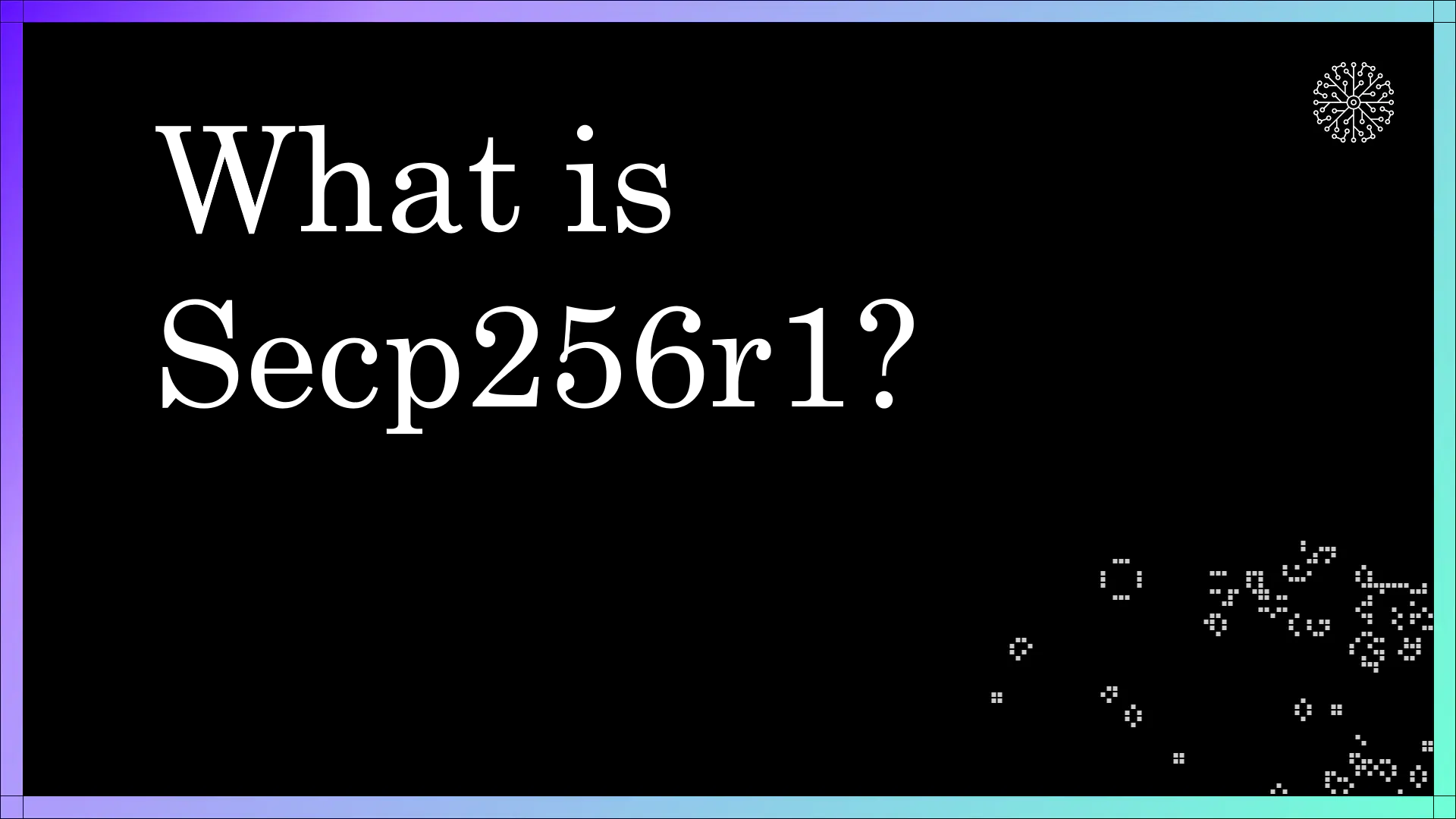Secp256r1, also known as "P-256" is a common elliptic curve used in the cryptographic domain of digital signatures and key exchange and seeing growing adoption in the blockchain industry.

The Secp256r1 curve is a common elliptic curve used in cryptographic applications for digital signatures. It is based on the mathematical properties of elliptic curves and operates in a finite field over prime numbers, providing 256-bit security level, which means that it is resistant to attacks that try to solve the underlying mathematical problem (elliptic curve discrete logarithm problem) with current computational capabilities.
Applications in cryptography
Secp256r1 is commonly used across various cryptographic applications, such as the creation of digital certificates and in the generation of public-private key pairs for secure communication protocols like TLS and SSL (Secure Sockets Layer).
Secp256r1 is also a key building block of WebAuthn, a web standard developed by the World Wide Web Consortium (W3C) and the FIDO Alliance and designed to provide a secure and easy-to-use authentication mechanism for web applications and online services.
With Secp256r1 widely supported across consumer hardware such as laptops and mobile phones, WebAuthn enables passwordless authentication, in which users log in to websites and online services without the need for traditional passwords, instead authenticating using a private key held inside secure hardware embedded in their device.
Applications in blockchain
Support for Secp256r1 can improve the usability and user interfaces of blockchains, creating intuitive interfaces and clear instructions to help newcomers navigate the blockchain ecosystem more easily.
Secp256r1 wallets eliminate the need for seed phrases, a complicated novel concept for new users. To maintain access to their wallet, a user must only ensure they maintain possession of their device.
Blockchain support
A handful of blockchains offer support for Secp256r1
- EOS: a blockchain platform designed for high performance, scalability, and ease of use for developers of decentralized applications (dApps). EOS employs a delegated proof-of-stake (DPoS) consensus mechanism WebAssembly (WASM) for its smart contracts, allowing developers to write code in various programming languages
- Tezos: a self-amending blockchain that utilizes on-chain governance to allow stakeholders to participate in the protocol's evolution. Its key features include formal verification (a technique for ensuring smart contract correctness) and community governance.
- Internet Computer (Dfinity): a decentralized and open internet computer, which aims to provide a scalable and efficient environment for hosting dApps and services directly on the blockchain.
- CKB: a maximally secure, decentralized and flexible Layer 1 blockchain utilizing the RISC-V instruction set to execute smart contracts. CKB employs the "Cell Model" for its blockchain state, enabling developers to create complex applications by composing cells (similar to UTXOs in Bitcoin) that interact with each other.
Conclusion
Secp256r1 plays a key role in facilitating the adoption of blockchains in which onboarding for users is seamless and feels like any other web application. By removing the need for seed phrases and the burden of backing them up, Secp256r1 is sure to be an important part of the future of the blockchain industry.

